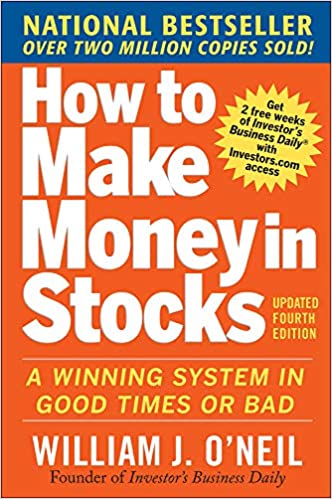
Jesse Livermore is one of the first extremely successful Stock Market Speculators. Although not as well known as many others, he has been extremely influential to notable traders such as William O’Neil.
https://twitter.com/TraderLion_/status/1415752392109404165
Livermore made his fortunes a hundred years ago, however, his methods still hold true to this day because as he explains:
“All through time, people have basically acted and reacted the same way in the market as a result of greed, fear, ignorance, and hope...
“All through time, people have basically acted and reacted the same way in the market as a result of greed, fear, ignorance, and hope...
... That is why the numerical formations and patterns recur on a constant basis. Over and over, with slight variations. Because markets are driven by humans and human nature never changes.”
-Jesse Livermore
-Jesse Livermore
The core components of Jesse Livermore’s Strategy will sound very familiar
In his book How to Trade In Stocks he discusses
✅Trading Mindset
✅Focusing on the Leaders
✅Normal Price Action and Expectation Breakers
✅The Pivotal Point
amzn.to/33iFge0
In his book How to Trade In Stocks he discusses
✅Trading Mindset
✅Focusing on the Leaders
✅Normal Price Action and Expectation Breakers
✅The Pivotal Point
amzn.to/33iFge0
His story is both a testament to the incredible opportunity available in the Stock Market, but also a clear reminder that mental health is the most important thing and that you must practice good discipline & manage risk once you have developed a winning system.
Livermore was born in 1877 and from an early age excelled in school and was especially gifted at mental math.
In 1891, he ran away from home and started working at Paine Weber & Co’s in Boston writing stock quotes.
At age 15 he started trading and reading the ticker tape.
In 1891, he ran away from home and started working at Paine Weber & Co’s in Boston writing stock quotes.
At age 15 he started trading and reading the ticker tape.
He was adept at recognizing patterns within the quotes and soon made his first $1,000 by trading stocks and commodities in bucket shops around Boston.
Bucket shops were shady brokerage firms that allowed people to bet on the price movements of stocks and commodities. 

After quitting his job and focusing on speculation, he became notorious around the Boston bucket shops and racked up his bankroll to $10,000. Bucket shops soon refused to let him trade.
Livermore then moved on to New York and began trading on the NYSE.
Livermore then moved on to New York and began trading on the NYSE.
His skills did not quite transfer at first and he ended up reducing his account to $2,500
Livermore would return to the bucket shops to build up his capital, a cycle that would repeat itself a few times.
Livermore would return to the bucket shops to build up his capital, a cycle that would repeat itself a few times.
However, his methods kept him in tune with the market action and in 1906 and 1907 he noticed it was going sour and made $300,000 shorting the market (The equivalent of 8 Million Today) 

Throughout his trading career Livermore continued to struggle with discipline and following his own system. He would lose all his profits and declare bankruptcy multiple times.
In 1915 after losing it all, he gets a loan from a friend and trades Bethlehem Steel perfectly, buying just under the $100 “Livermore Level” and selling for a handsome profit, building up his stake once more. 

The next few years he continued to trade well and built up his fortune and in 1922 he was interviewed by Edwin Lefevre for a article series on speculation. These would later be turned into an excellent book called 'Reminiscences of a Stock Operator.'
amzn.to/33fnsAo
amzn.to/33fnsAo
In 1929, Livermore noticed similarities to previous market crashes and once again shorted the market. His profits totaled nearly 100 Million.
The next decade proved troublesome for Livermore. He once again lost his fortune and had poor mental health.
The next decade proved troublesome for Livermore. He once again lost his fortune and had poor mental health.

In 1939 he wrote How To Trade in Stocks, a quick but profound read summarizing his methods in speculation.
In 1940 at age 63, he unfortunately committed suicide after sufferings from depression.
In 1940 at age 63, he unfortunately committed suicide after sufferings from depression.
The factors which created the markets Livermore traded a hundred years ago, are the same ones impacting stock prices today. His method of buying at the pivotal point is the basis for many technical analysis systems and is well worth studying. 

How has Livermore impacted your trading?
Want the Free Model Books to print & study? 📚
✅ 3 Years (2018-2020)
✅ 30+ Charts highlighting Winning Characteristics
✅ Fundamental & Technical Analysis
Train your eyes to spot the next True Market Leaders 👇🏼
traderlion.com/model-book-pri…
✅ 3 Years (2018-2020)
✅ 30+ Charts highlighting Winning Characteristics
✅ Fundamental & Technical Analysis
Train your eyes to spot the next True Market Leaders 👇🏼
traderlion.com/model-book-pri…
• • •
Missing some Tweet in this thread? You can try to
force a refresh














